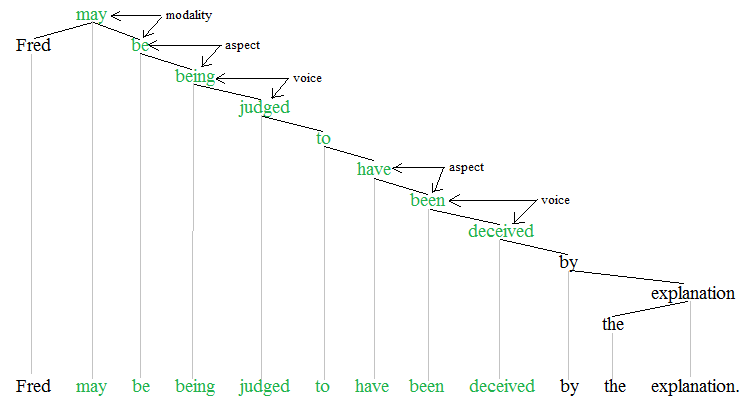Most clauses contain at least one main verb, and they can contain zero, one, two, three, or perhaps even more auxiliary verbs.[17] The following example contains three auxiliary verbs and one main verb: The paper will have been scrutinized by Fred. The auxiliary verbs are in bold and the main verb is underlined. Together these verbs form a verb catena (chain of verbs), i.e. they are linked together in the hierarchy of structure and thus form a single syntactic unit. The main verb scrutinized provides the semantic core of sentence meaning, whereby each of the auxiliary verbs contributes some functional meaning. A single finite clause can contain more than three auxiliary verbs, e.g. Fred may be being judged to have been deceived by the explanation. Viewing this sentence as consisting of a single finite clause, there are five auxiliary verbs and two main verbs present. From the point of view of predicates, each of the main verbs constitutes the core of a predicate, and the auxiliary verbs contribute functional meaning to these predicates. These verb catenae are periphrastic forms of English, English being a relatively analytic language. Other languages, such as Latin, are synthetic, which means they tend to express functional meaning with affixes, not with auxiliary verbs. The periphrastic verb combinations in the example just given are represented now using the dependency grammar tree of the sentence; the verb catena is in green

The particle to is included in the verb catena because its use is often required with certain infinitives. The hierarchy of functional categories is always the same. The verbs expressing modality appear immediately above the verbs expressing aspect, and the verbs expressing aspect appear immediately above the verbs expressing voice. The verb forms for each combination are as follows English allows clauses with both perfect and progressive aspect. When this occurs, perfect aspect is superior to progressive aspect, e.g.
